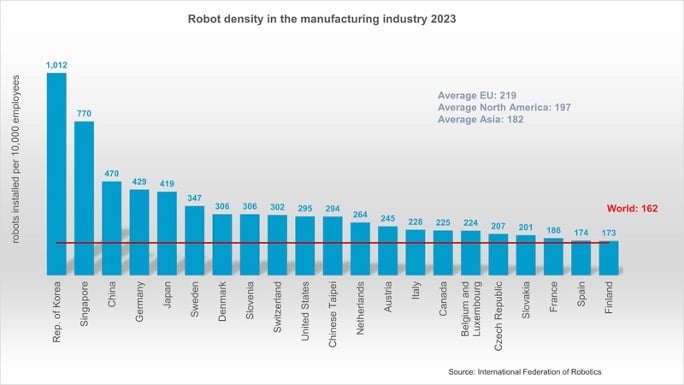GERMANY – Robot adoption in factories worldwide continues to accelerate. In 2023, the global average robot density reached a record 162 robots per 10,000 employees—more than double the 74 units recorded seven years ago, according to the World Robotics 2024 report by the International Federation of Robotics (IFR).

“Robot density is a key indicator of automation in manufacturing worldwide,” says Takayuki Ito, President of IFR.
In Europe, robot density stands at 219 units per 10,000 employees, a 5.2% increase. Germany, Sweden, Denmark, and Slovenia are among the global top ten. North America’s robot density is 197 units per 10,000 employees, up 4.2%, with the U.S. ranking tenth in global automation.
Asia’s robot density is 182 units per 10,000 manufacturing employees, a 7.6% increase. South Korea, Singapore, China, and Japan lead the region, with South Korea at number one globally, with 1,012 robots per 10,000 employees. The country’s electronics and automotive sectors are key drivers, with robot density growing 5% annually since 2018.Singapore ranks second with 770 robots per 10,000 employees, aided by its small manufacturing workforce. China is in third place, growing to 470 robots per 10,000 employees, up from 402 in 2022, marking significant growth since entering the top 10 in 2019.
Germany is fourth with 429 robots per 10,000 employees, reflecting steady 5% annual growth since 2018. Japan ranks fifth with 419 robots per 10,000 employees, with a 7% average annual increase in robot density from 2018 to 2023.


0 Comments